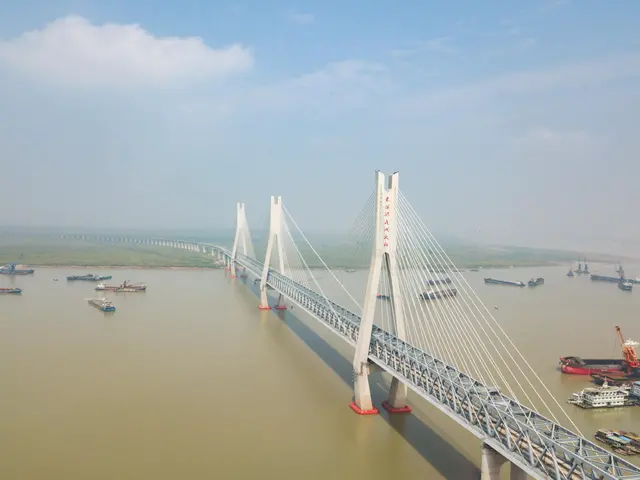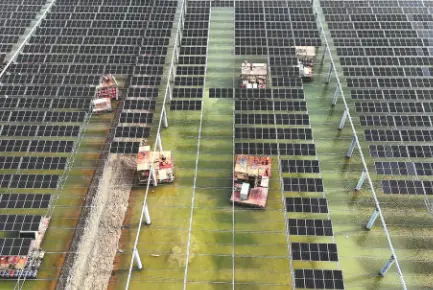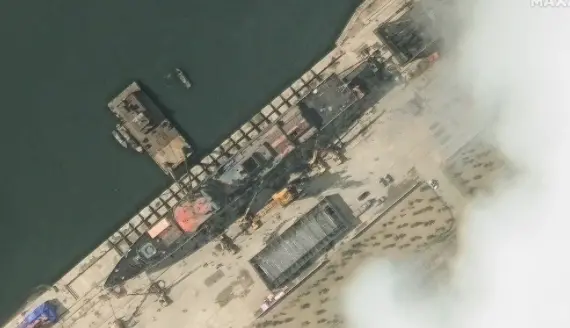Aerial photo taken on Sept. 19, 2019 shows anew bridge over Dongting Lake on the Haoji Railway (originally named Menghua railway) line in central China's Hunan Province. (Xinhua/Chen Sihan)
Living near the Chenglingji Port, on the bank of the Yangtze River, Tu Liang said he seldom opened his windows before.
"Keeping the windows closed could help us keep out the overwhelming dust outside," Tu said.
Standing at the juncture of the Dongting Lake and the Yangtze River, the port Tu mentioned in central China's Hunan Province has remained an important goods distribution center for land-water and water-water transfer in the middle reaches of the Yangtze since its official launch in 1899, making large contributions to the development of the local economy.
However, there has been another side to this glory over the past decades. Outdated facilities, rolling dust and filthy waters were turning residents off and eating away at the port's economic potential.
"Coal and iron ore used to be piled up in the dock without cover and sewage flowed everywhere after it rained. Coming back from the dock, I would throw my shoes away," said Nie Zhiqiang who has lived near the port for about half a century and has been looking forward to changes.
The beacon of hope came in 2016 when the development and protection of the Yangtze River entered into a new era, ushering in a green and efficient transformation of the century-old port once faced with the possibility of overall relocation.
In around 2016, local authorities invested more than 18 million yuan (about 2.54 million U.S. dollars) for the renovation and upgrade of the sewage treatment system in Chenglingji's international container terminal, a place often called the new port of Chenglingji that could produce 100 to 120 tonnes of sanitary sewage daily and a large amount of wastewater from the cleaning of mineral containers.
After the renovation, the treated sewage can now be recycled, with some flowing into a clear water tank where more than a dozen goldfish are kept.
Meanwhile, environmental protection companies have been introduced for the recycling of the sorted garbage on the new port. Docked ships are required to obtain a "garbage receipt" before they can undergo further clearance procedures.
Shore power facilities, high-efficiency and energy-saving systems, and especially the 18,000 square meters of new turf and 1,230 newly planted trees along the Yangtze, coupled with colorful containers, have made the site appear more like a park than a port.
On Saturday, a capsule-shaped bulk cargo warehouse was officially put into use, marking another major step in the introduction of more eco-friendly and high-quality riverside development.
With the totally enclosed colossal warehouse that is about 470 meters long, 110 meters wide and 46.5 meters in height, cargo on ships can be transported directly into the warehouse through a conveyor belt, before being either piled up or loaded onto a train, said Wang Wenhua, director of the Chenglingji New Port Administrative Committee.
The whole process will be completely shut off from the surroundings, and continuous mist spray inside the warehouse can help prevent the buildup of dust and water pollution previously occurring at the port's freight yard, thus aiding the protection of the Yangtze River ecological environment, Wang added.
"With more advanced equipment and a better environment, changes to the port have gone far beyond our imagination," Nie Zhiqiang said.
 简体中文
简体中文










